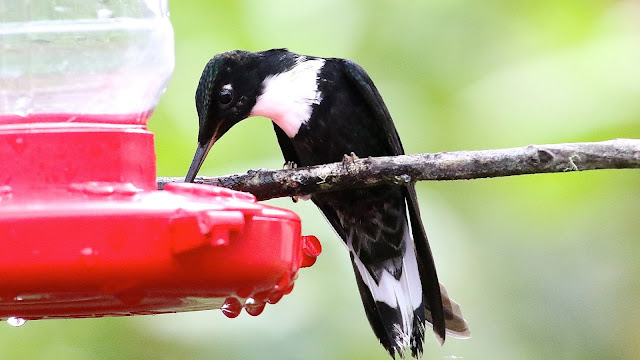Collared Inca

This is another of the 41 species of hummingbirds we saw while in Ecuador. Coeligena torquata Collared Incas are extremely quick fliers but occasionally identify themselves in the forest by flashing open their white tails. These large hummers frequent humid montane forests—especially those that are dense and moss-filled, and also live around shrubby forest edges. They tend to feed low in dense, tangled shrubs and hover underneath flowers to feed. Both males and females have white outer tail feathers and large chest patches. The chest patch is either white or rufous, depending on geographic location. http://neotropical.birds.cornell.edu/portal/species/overview?p_p_spp=264376

